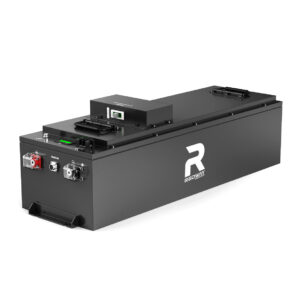What Makes the 150Ah 48V Lithium Golf Cart Battery the Best Choice?
The 150Ah 48V lithium golf cart battery offers superior energy density, longer lifespan, and faster charging compared to lead-acid batteries. Its deep-cycle design ensures consistent power output for extended golf cart use. With lightweight construction and minimal maintenance, it’s ideal for golfers seeking reliability, efficiency, and eco-friendliness. Lithium batteries also excel in temperature resilience and cost savings over time.
How Does a 150Ah Lithium Battery Enhance Golf Cart Performance?
A 150Ah lithium battery provides stable voltage output, preventing power drops during uphill climbs or long rounds. Its high energy density ensures extended runtime, while rapid recharge capabilities minimize downtime. Unlike lead-acid, lithium batteries maintain efficiency even at 80% depth of discharge, delivering consistent torque and speed for golf carts.

Advanced lithium-ion chemistry enables faster electron transfer, allowing golf carts to maintain peak speeds of 15-19 mph for 35-50 miles per charge. This performance remains consistent throughout the battery’s discharge curve, unlike lead-acid models that lose 20% power after 50% discharge. The reduced weight (typically 55-75 lbs vs. 130+ lbs for lead-acid) improves energy efficiency by 18-22%, translating to longer drives between charges.
Why Choose Lithium Over Lead-Acid for Golf Cart Batteries?
Lithium batteries outperform lead-acid with higher efficiency (95% vs. 80%), faster charging (2–4 hours vs. 8+ hours), and zero maintenance. They retain 80% capacity after 2,000 cycles, while lead-acid degrades after 500. Lithium’s lightweight design improves cart maneuverability and reduces energy waste, making it cost-effective despite higher upfront costs.
| Feature | Lithium | Lead-Acid |
|---|---|---|
| Cycle Life | 3,000-5,000 | 300-1,000 |
| Charge Time | 2-4 hours | 8-12 hours |
| Weight | 55-75 lbs | 120-150 lbs |
How Long Does a 150Ah 48V Lithium Golf Cart Battery Last?
A 150Ah 48V lithium battery lasts 8–10 years with proper care, delivering 3,000–5,000 cycles at 80% depth of discharge. Factors like charging habits, temperature exposure, and usage frequency impact lifespan. Regular partial charging and avoiding full discharges below 20% can extend its service life beyond a decade.
Can Lithium Batteries Withstand Extreme Temperatures?
Lithium batteries operate efficiently in -20°C to 60°C ranges, with built-in thermal management in premium models. They lose less than 15% capacity in freezing conditions, unlike lead-acid, which struggles below 0°C. High-temperature resilience prevents swelling, making them ideal for golf carts used in hot climates or seasonal storage.
What Safety Features Do Lithium Golf Cart Batteries Include?
Lithium batteries feature multi-layered safety systems: BMS for voltage regulation, temperature sensors, and short-circuit protection. Cell balancing prevents overcharge, while flame-retardant casing and pressure vents mitigate thermal runaway risks. UL-certified models undergo rigorous testing for impact resistance and leak prevention, ensuring safe operation on uneven terrains.
How to Properly Maintain a 48V Lithium Golf Cart Battery?
Store lithium batteries at 50% charge in dry, cool environments. Avoid full discharges; recharge when hitting 20–30% capacity. Clean terminals monthly with a dry cloth. Use a compatible lithium-specific charger to prevent BMS conflicts. Annual voltage checks and firmware updates (for smart batteries) optimize performance and longevity.
What Environmental Advantages Do Lithium Batteries Offer?
Lithium batteries are 95% recyclable, with non-toxic materials reducing landfill harm. Their 10-year lifespan cuts waste frequency by 300% versus lead-acid. Energy-efficient production emits 40% less CO2, and zero emissions during use support eco-friendly golfing. Solar-compatible charging further reduces carbon footprint.
The shift to 48V lithium systems in golf carts isn’t just about power—it’s a sustainability leap. Modern BMS technology allows these batteries to self-optimize, extending lifespan even under heavy use. At Redway, we’ve seen courses reduce energy costs by 60% after switching, proving lithium’s ROI transcends initial investment.”
— Redway Power Solutions Engineer
FAQs
- Can I retrofit my lead-acid golf cart with a lithium battery?
- Yes, most 48V golf carts support direct lithium replacements. Ensure the battery dimensions match your tray, and upgrade to a lithium-compatible charger. Consult your cart manual for voltage compatibility.
- Do lithium batteries require ventilation?
- Lithium batteries generate minimal heat and don’t emit gases, unlike lead-acid. Ventilation isn’t critical but recommended in enclosed spaces to prevent heat buildup during rapid charging.
- How do I recycle a lithium golf cart battery?
- Contact certified e-waste recyclers or battery retailers offering take-back programs. Never dispose of lithium batteries in regular trash due to fire risks. Some manufacturers provide prepaid recycling labels.
